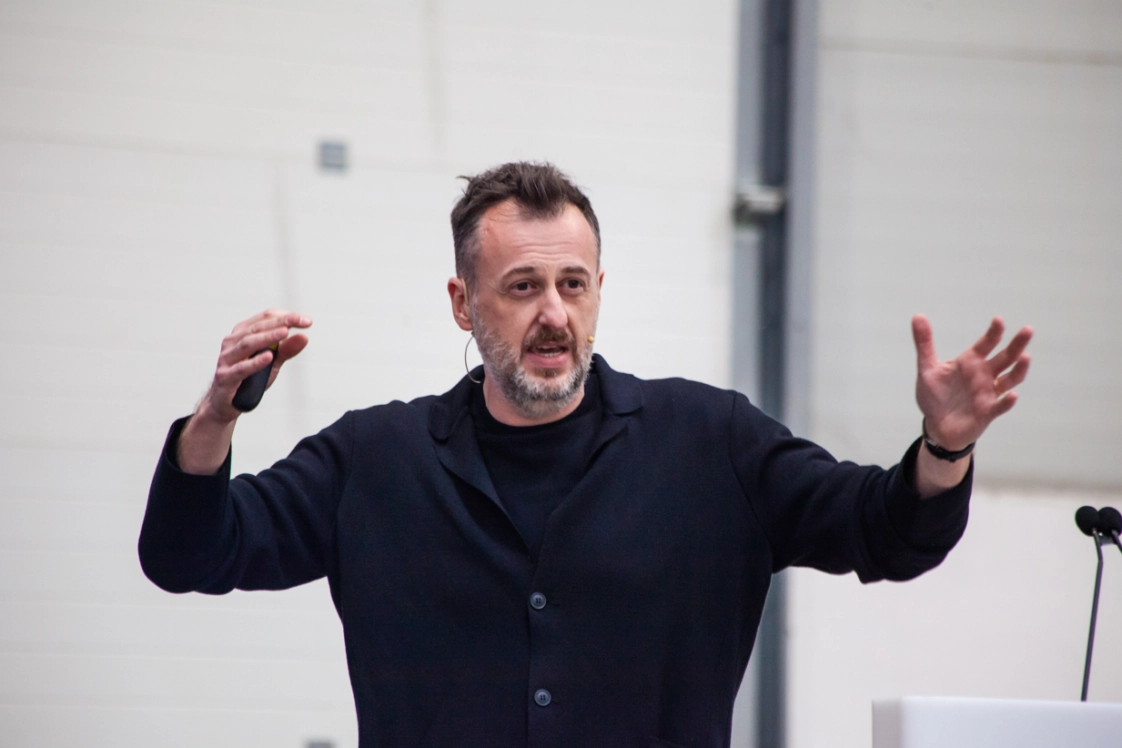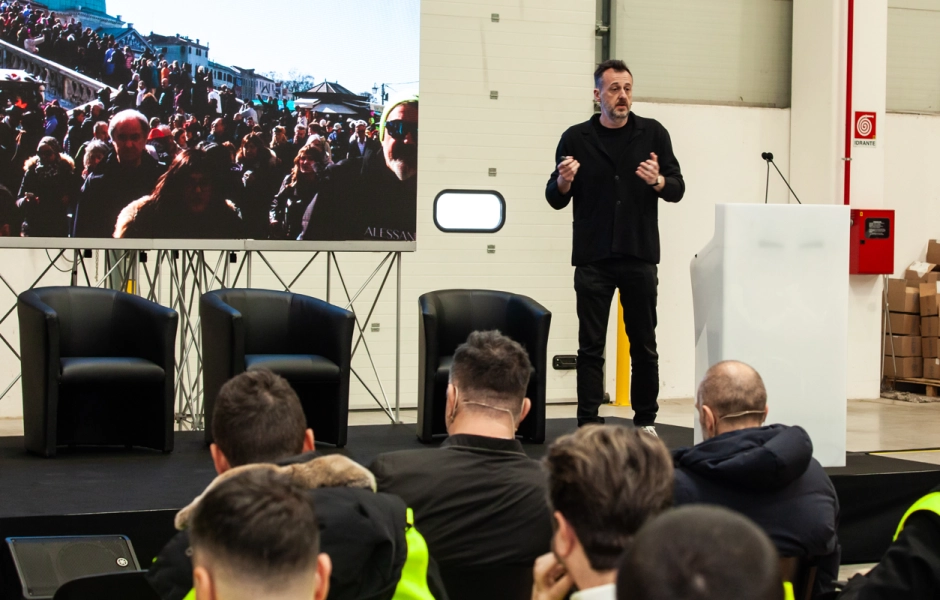The invisible e-commerce in the transformation economy

Venice

A few weeks ago, I spent a weekend in Venice with my team. The city was stunning, the carnival was in full swing, and there was no shortage of spritz. It all seemed like a perfect plan—until we stepped into the crowds.
I took a photo to capture the overwhelming number of tourists, but no image could do justice to the chaos. Every few steps, someone tried to sell us something. A bottle of limoncello, cheap carnival masks, multilingual menus, and of course, global brands offering the same products you find in every city in the world.

Valentino Caporizzi durig an event at the Radial warehouse in Milan
The experience reminded me of something: the internet today.

It’s become just like that Venice—crowded, noisy, and filled with people trying to sell you things you don’t need, and won’t remember tomorrow.
From Transactional to Transformational
Let’s rewind to 2009. I was working on my first major global e-commerce project. Back then, e-commerce was a commodity. You found a product, added it to your cart, paid, and waited for delivery. The real work was in refining services—customer support, shipping times, return policies.
Over the years, brands shifted focus from transactions to experiences. They offered more than products: they told stories, created events, and delivered content. The goal was to make the customer feel something memorable.

Street photography by Valentino Caporizzi
But today, even that has become a commodity. Every brand promises a journey, an emotion, a story. And consumers are flooded with these promises, all sounding the same.
The Problem with Modern E-commerce
We’ve reached a point where the digital marketplace is oversaturated. Brands fight for attention in a noisy space. They offer the same products, the same experiences, the same promises. And consumers? They’re tired. The magic is gone.
So what’s next?
The Future: Invisible and Transformative
I believe the next era of e-commerce will be defined by two fundamental shifts:
- Invisible Commerce – Shopping will no longer be a conscious action. It will be seamless, integrated into everyday life. There will be no need for catalogs, websites, or apps. The best commerce will be the one you don’t notice.
- Transformative Commerce – People won’t buy products. They’ll buy who they want to become. Products will be tools for transformation—physical, emotional, or even existential.

Street photography by Valentino Caporizzi
A Day in 2030
Picture this: It’s a spring morning in 2030. You wake up to the smell of freshly brewed coffee, not because you set a timer, but because your sleep patterns were tracked overnight and your assistant knew the exact moment you’d be ready.
You hear a gentle voice: “Good morning. You didn’t sleep much last night—I’ve ordered you a high-energy breakfast. It’ll arrive in ten minutes.”
Your wardrobe, synced to your calendar and mood, suggests not what you want to wear, but what will help you achieve today’s goals—confidence, elegance, comfort.
Your workout is auto-adjusted. Your playlist is curated to give you that extra push. Your skincare routine is optimized in real time, based on a live scan of your face in the bathroom mirror.
Later, you pick up your camera. You’re a photography enthusiast. Your assistant doesn’t just recommend gear—it suggests classes based on your progress, curates photo routes, and enhances your shots in the style of your favorite artists.
You want to go to a concert? Your assistant takes care of tickets, suggests an outfit, books a dinner table nearby, and plans a smooth way home—because it knows your energy drops after midnight.
Everything is tailored to your goals, your values, your context. And you didn’t browse a single catalog.
Who’s Leading Who?
This is the real question. If AI begins to understand not only what we need, but who we want to become—what happens then?
What if your assistant knows you’re ready for a career change before you do? That your passions are evolving? That your identity is shifting?
This future isn’t far off. According to Gartner, by 2030, 85% of customer-brand interactions will be managed by AI. That doesn’t mean less humanity. It means more time for what really matters: our journey.
Imagine planning a trip. AI won’t suggest the most popular destination. It’ll propose a remote cooking school because it senses your need for simplicity. Or a creative workshop in Berlin to reignite your inspiration.
Not based on who you are today—but on who you could become.
The Real Transformation
This is the new role of brands: not to help people choose, but to help them grow. To do that, we need to ask ourselves:
- What kind of transformation do we want to offer?
- How can we become part of our customers’ evolution?
- Will we guide technology—or will it guide us?
Until 2030… if you feel like making an impulsive purchase, go for it. Maybe even mistakes are part of the transformation.
Valentino Caporizzi
Chief Strategy Officer at Retex

With a rich background spanning roles at Atoms (which he founded), NTT DATA, Kering, Wunderman, and Dolce & Gabbana, Valentino brings invaluable insights on human-centered transformation strategies for fashion and retail.
When he’s not revolutionizing digital experiences, he captures striking urban moments as a talented street photographer – check out his work @valentinocaporizzi on Instagram.
